Iris A-Z: O and a quick P
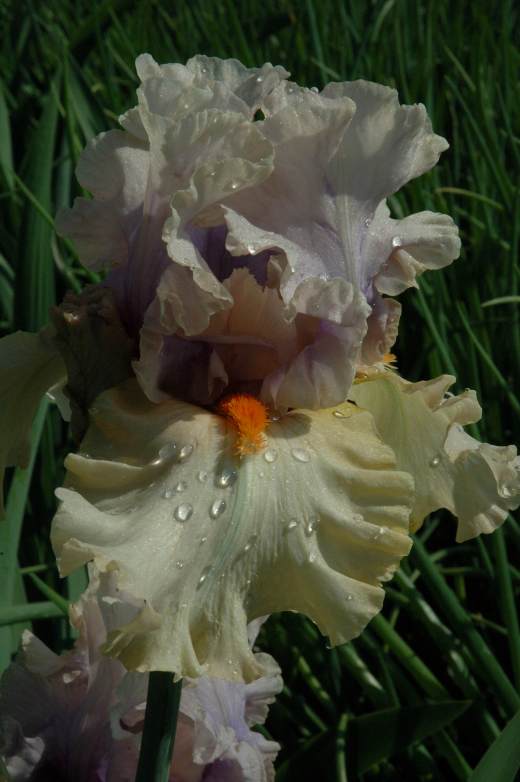
‘Opposing Forces’
This Keith Keppel 2002 introduction is one of those strange blends that divide opinion. It is basically a greyish pink but there are hints of lavender and salmon pink. I reminds me of a cloudy sunset and has a stormy look to it. Pastel, delicate or dull, the choice is yours but it never looks the same from one flower to the next and at different times of day. It did win a couple of awards.
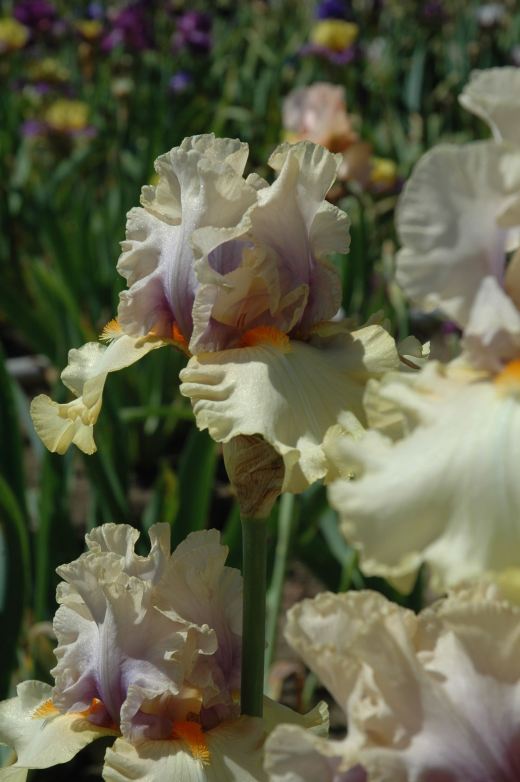
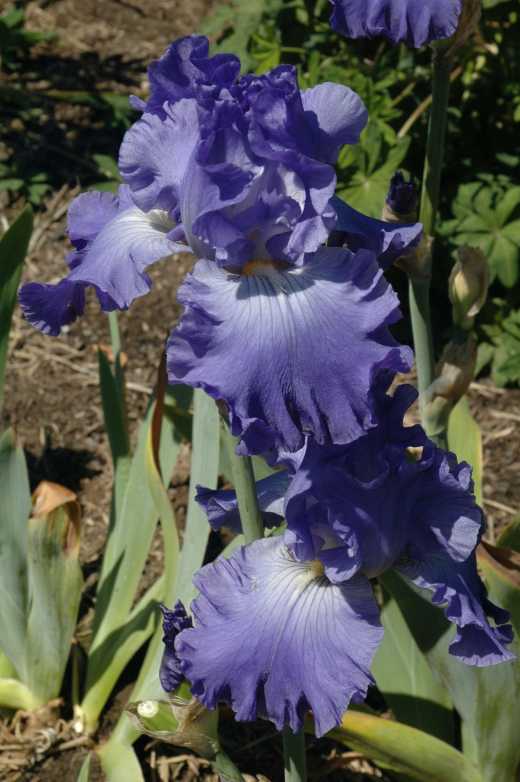
‘Ouragan‘
This French Cayeaux iris is a cross between two Schreiner blues and was introduced in 1995. It is a pleasantly ruffled blue and quite stocky at 80cm. The ruffled and swirling petals suit its name which is French for ‘hurricane’ though if it was called ‘Ciel d’été’ I would have been just as convinced!
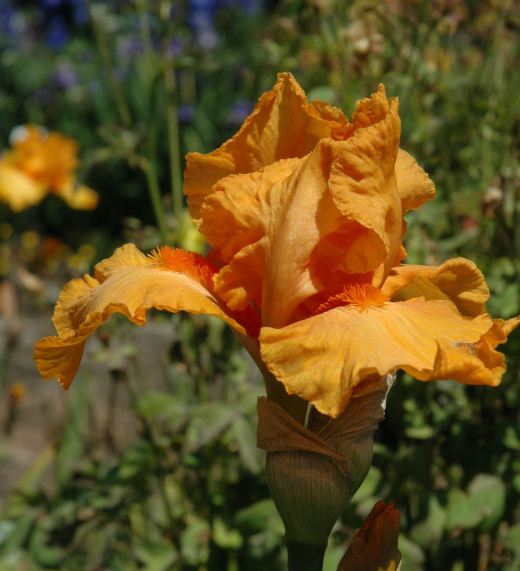
This fruity beauty was raised by Duane Meek of Silverton, Oregon and introduced in 1996. Raised by crossing two orange iris I am not sure why it was such a surprise but it is a fully saturated flower. Bearded iris do orange very well and they are especially lovely with the dark purples.
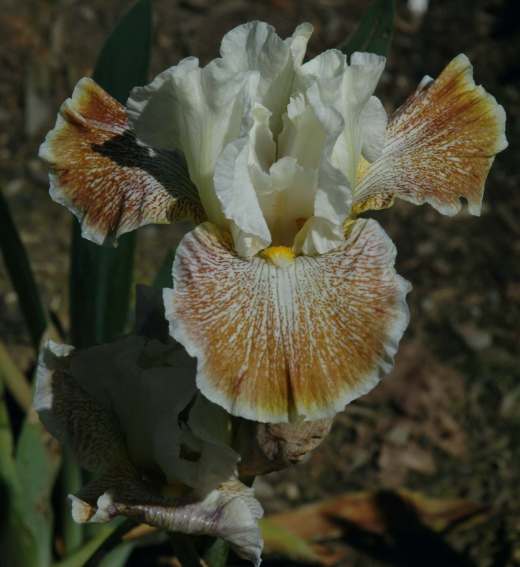
‘Owyhee Desert’
This interesting iris has similar colouring to ‘Ring around Rosie’ and ‘Carnival Ride’ which were introduced this century. All have ‘Wild Jasmine’ (wait a week or so for that) as parents but ‘Owyhee Desert’ was introduced in 1996 and raised by Idaho-based Lucille Pinkston. It achieved an Award of Merit in 2001. The flowers are relatively small but they are fragrant to add to its charms. Several iris have the Owyhee prefix and it is a tributary of the Snake River in Nevada and Owyhee Desert is an arid area straddling Nevada, Oregon and Idaho. There is a Lake Owyhee in Oregon too.
After a meagre selection yesterday and a normal number today, I have a raft of iris lined up for tomorrow. To balance things a bit I will cheat and pop in a P today with a species, but in the form of a couple of variations that are very worthy of inclusion in any garden.
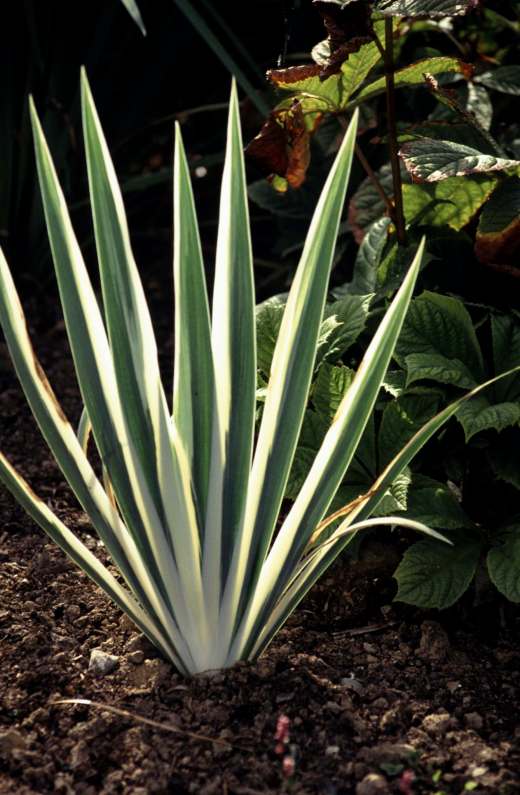
Iris pallida
Iris pallida is a wild bearded iris from the Mediterranean that is probably a parent of the early hybrids. It has small, but lovely, blue flowers that are very sweetly fragrant. There are several subspecies and it is often quoted as the source of the violet-scented orris root but I understand that to be the paler-flowered I. florentina which is distinctly different. Lovely though the natural I. pallida is, it is the two variegated forms that really stand out. It is often said that the sword-like foliage of bearded iris makes a valuable contribution to the look of the border but that is, in reality, a bit of rose-tinted spectacle wearing. The foliage is often disfigured by leafspot fungus and in winter, when lots of the leaves are dead, they really are not very pretty. But I. pallida is blessed with good leaves, that are much greyer/bluer than most and the addition of variegation makes then really good foliage plants. There are hybrids with variegated leaves, trying to combine great flowers and great foliage but they rarely match Iris pallida – though this will eventually change and Paul Black has some good attempts.
‘Argentea Variegata‘
There are two variegated forms. It could be argued (but not by me) that ‘Argentea Variegata’ (photo above) is the most attractive. The leaves are striped with white, most often on the inner edge. The reason that both these forms are so effective as variegated plants is that the variegation is bold and runs lengthwise. Other variegated iris are irregularly streaked and this does not look so good. Anyway, ‘Argentea Variegata’ is a striking foliage plant (argentea means silver) but it does not flower as freely as the species and the flowers are smaller.
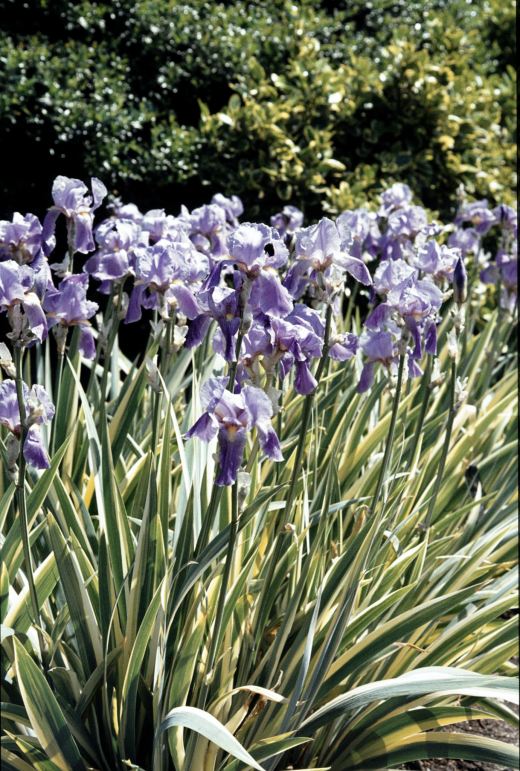
‘Variegata‘ (‘Aurea’)
I much prefer the golden-variegated form (aurea means gold) although it is really striped with primrose yellow. The RHS must agree with me because this one has the AGM (Award of Garden Merit). The combination with the grey green is striking but not too flashy. And the flowers are the same as the species and very showy and fragrant. A feature of Iris pallida is that the spathes around the flowers are completely dry and silvery (or brown in some subspecies) when the flowers are open. If any iris deserves to be in every garden it is this.
Iris pallida without variegation are my all time favorite iris. I still think of them as bearded iris, because that is how I learned about them. Those who know my iris do not understand why. They are so simple relative to the much fancier bearded iris. I got mine from the garden of my maternal, maternal great great mother, and shared some with my sister and her daughter, who is now sharing them with her daughter! They are on their sixth generation!
I can understand why you treasure it and pass it on, it is a lovely plant
I believe that my great grandmother grew it in her vegetable garden as orris root rather than for the bloom. Canna was another that was grown as a vegetable, but happened to be pretty also.
I have never tried to eat cannas though I know they are apparently edible. The same with dahlias which I have never fancied eating because of the smell of the plants.
Well, some are better for eating than others. Technically, all parts except the seed of canna are edible, and some people even make flower from the wickedly hard seed. (I doubt that those hard shells are digestible.) The foliage is best before it matures, and really is not all that good. The flowers are no better, but look pretty in a salad. What I want from them is the starchy rhizomes. The cultivar that I got for that makes very fat rhizomes that get about as big as small potatoes. However, they are not the prettiest. They do not stand as vertically as the ornamental sorts, and the slender flowers are comparable to those of Canna musifolia, so are not very colorful.
I could grow prettier types, and I do grow a few, but the vegetable sort is pretty enough for me.